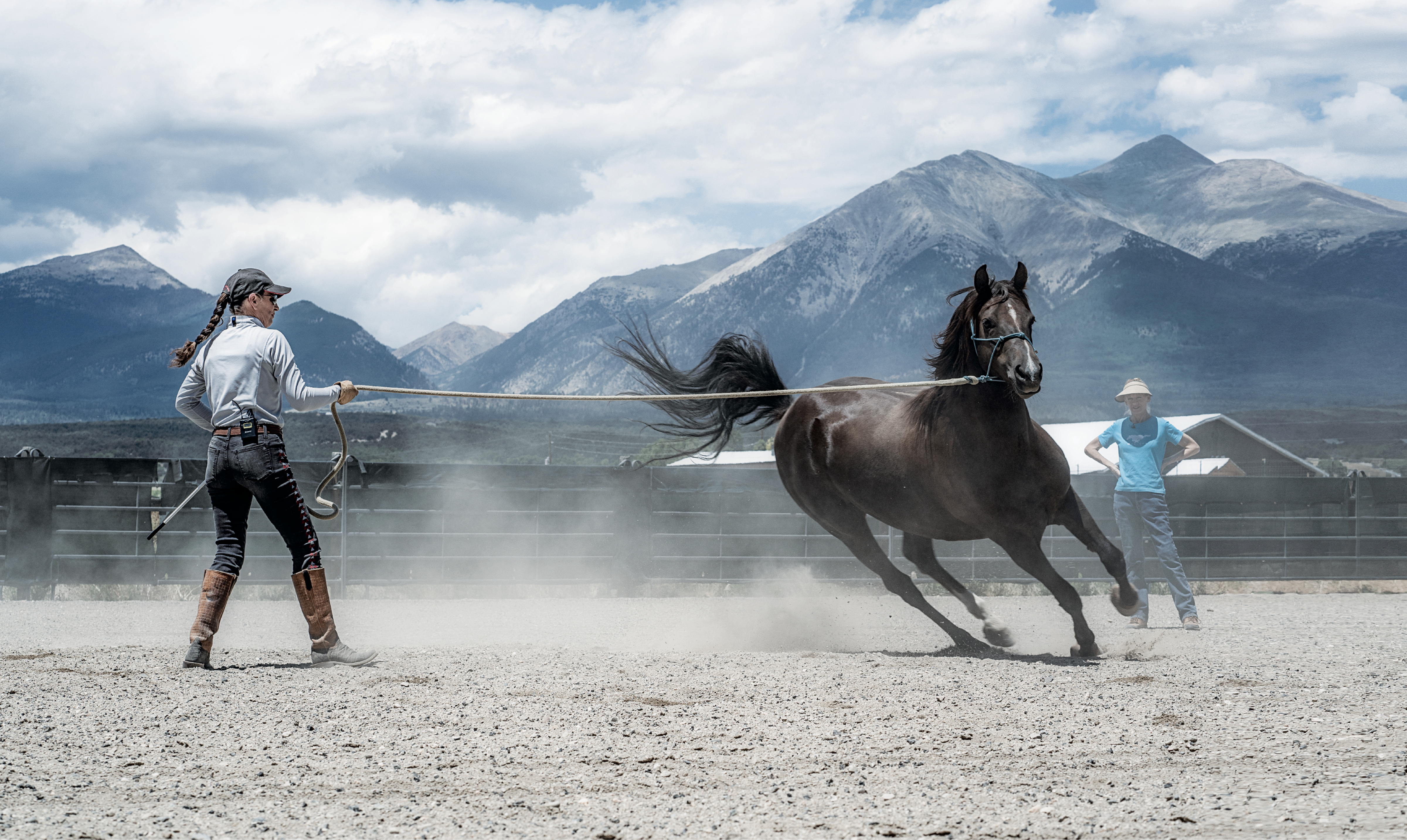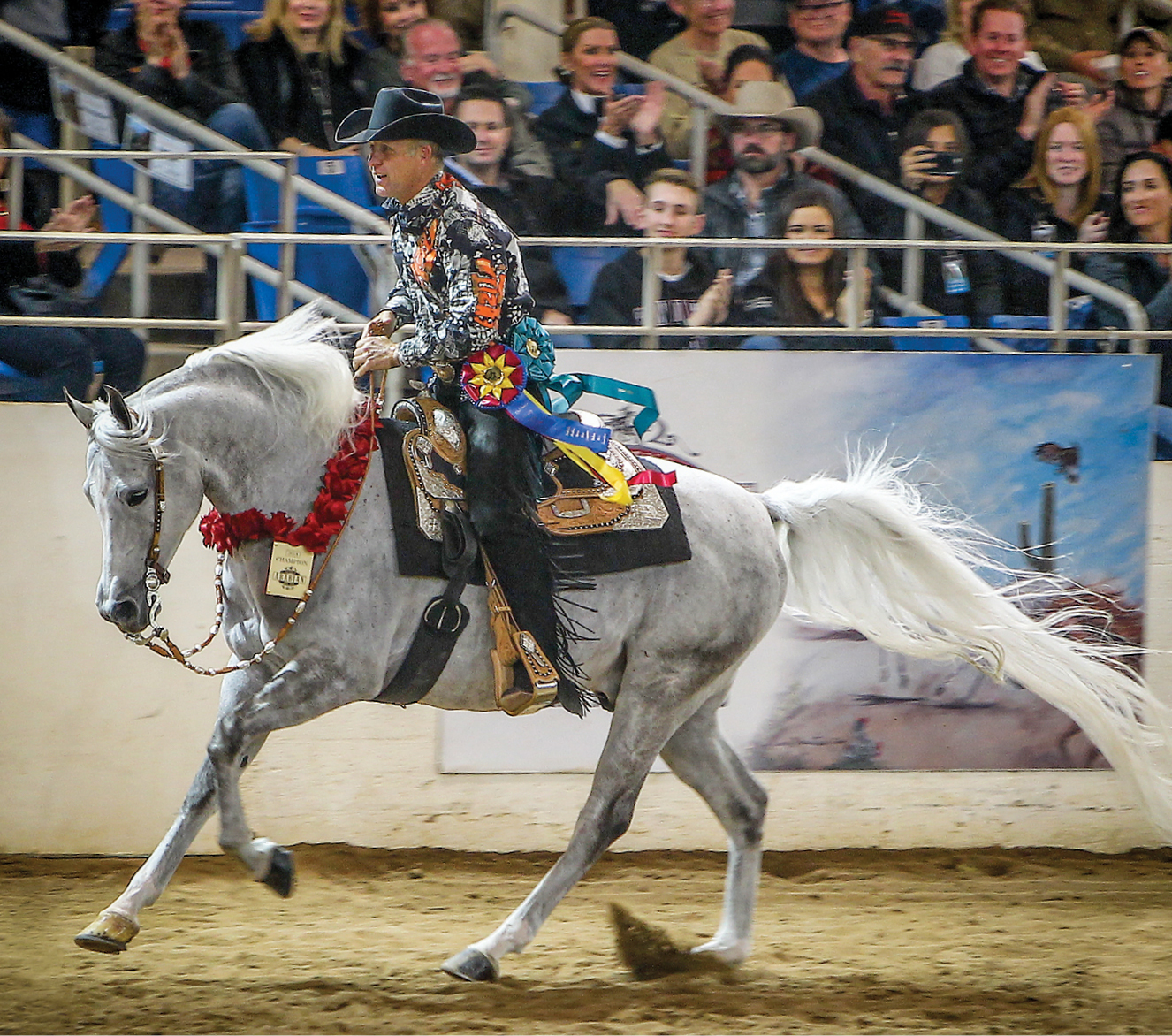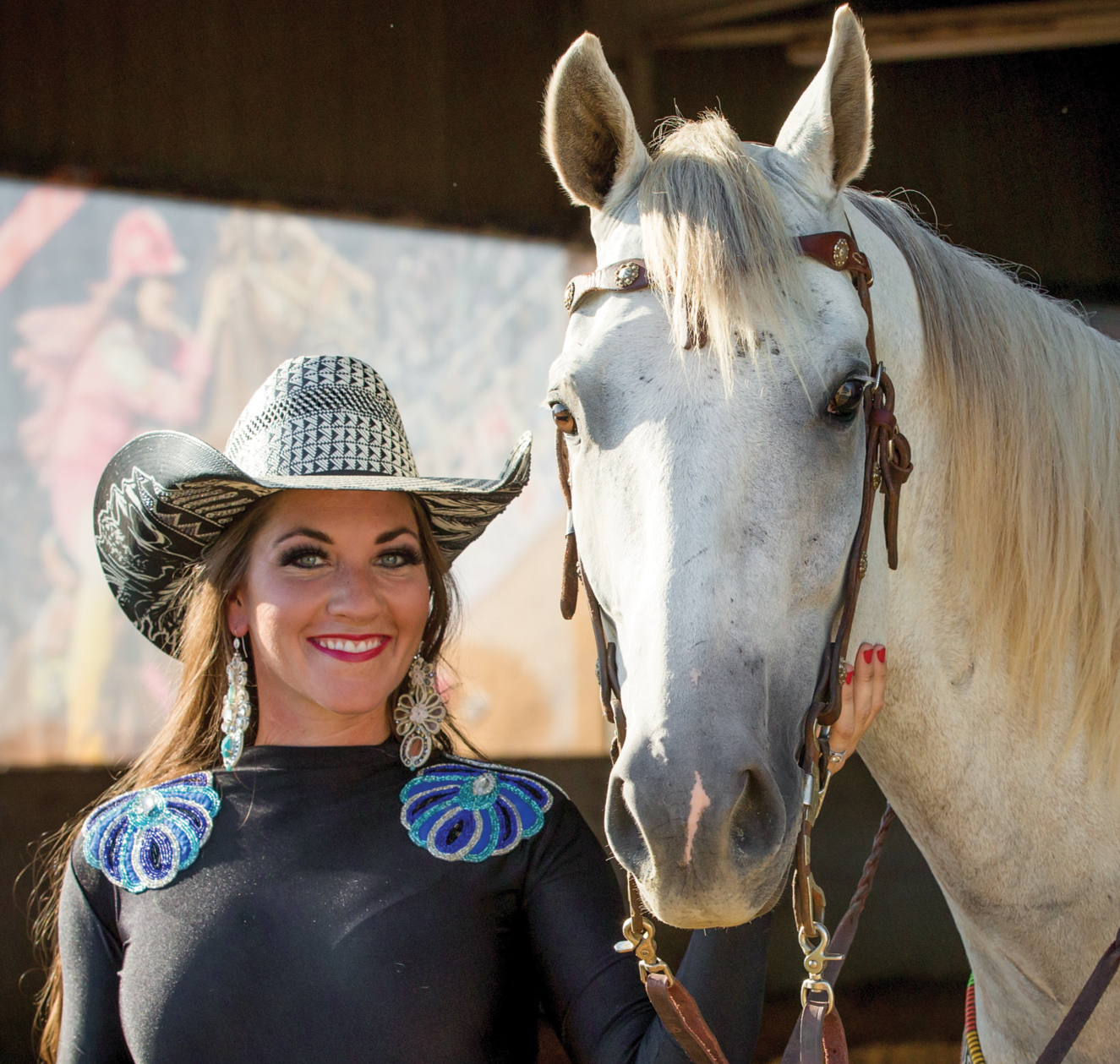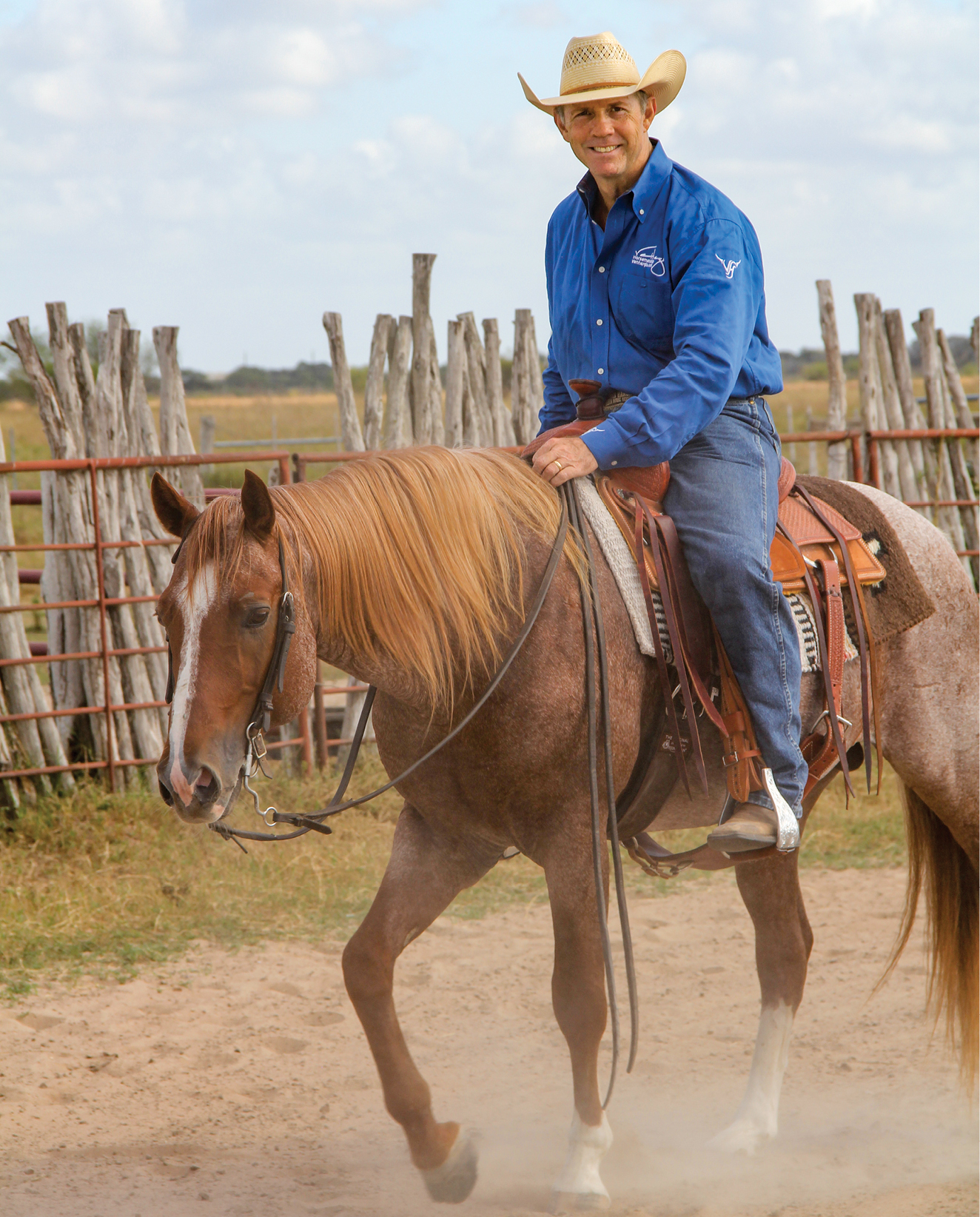Insight can help us understand and train our horses better. Where does insight come from? Typically it results from experience tempered with thought leading to some fresh realization. So even those challenging moments we struggle through with our horses (everyone has them) can result in newfound wisdom…if we take the time to think them through.

We asked four experienced horsemen to share their own “eureka moments”—that is, the pivotal events that led to key horse-training insights. Read their stories—provided in their own words—and you’ll increase your ability to recognize and benefit from eureka moments of your own.
Tommy Garland: ‘Temper, Temper’

A popular clinician as well as a show trainer, Powhatan, Virginia-based Tommy Garland is a past Western Pleasure Trainer of the Year for the Arabian Professional and Amateur Horseman’s Association. His eureka moment, which came when he was training and showing Quarter Horses with his father, helped set him up for success with Arabians—and all horses.
My dad could train anything. He knew when he had to correct a horse for something, but he was always easy-handed and quiet. He’d think his way through problem areas. He never lost his cool.
My eureka moment came when I was 21 and working with my dad. I was riding a 2-year-old green Quarter Horse gelding that was being difficult. I can’t remember now what I was trying to get him to do, only that he definitely wasn’t getting it. Frustrated, I began to get heavy-handed. My dad noticed.
“You got that?” he called.
“Yeah,” I grunted. I continued with the colt in the same manner. Before long, my temper snapped. When my dad saw me jerk the reins, he came straight over.
“I’ve seen enough,” he barked. “Get your butt off that horse!” Only he didn’t say “butt.” Then he lowered the hammer.
“Go to the house.”
I slunk away, but my sentence was only beginning. My father banned me from the barn for a full week. Finally, one night at supper, he brought the topic up again.
“Do you think you can train a horse the right way?” He leveled his gaze at me. “Do you think you can think your way through things and not lose your temper? If so, you can come back to the barn.
“But if not,” he added, “you need to find some other way to make a living.”
And that’s when the lightbulb went on in my head. My options were painfully clear. From that day on, I never did lose my temper with a horse again. Interestingly, the commitment to avoid anger forced me to become more thoughtful and creative. When I ran into problems, I couldn’t bull my way through. I had to stop and think, “What will it take to fix this?”
Every horse is different, and it’s a teaching process. The horses learn from you, you learn from them. Yes, you’re going to run into difficult ones, but I learned to stay true to my dad’s philosophy—adjust your training so the horse becomes successful at something.
Read More: 4 Mindset Keys to Achieve Your Goals
I learned to use my emotions in a different way, too. Instead of focusing on my own feelings of frustration, I tried to intuit what the horse was feeling. What’s going on with him? If you work to read them, horses will tell you a thousand things.
I also learned to better judge when I was up to giving a horse my best. Nowadays, if I’m having a bad day, I may not ride at all. I may put the horse on the walker or the longe line, then come back the next day and try again.
I want my horses to move right along in their learning, but I also want them to be happy while they’re doing it. When a horse is scared and locked up in the bridle, or locked in the shoulder, he’s not learning anyway.
If your teacher at school asked you, “What’s two times two,” then whacked your fingers any time you got it wrong, pretty soon you wouldn’t be able to think at all. That approach just guarantees that you’ll continue to fail.
It’s the same with your horse. Encourage him to get the right answer. I learned that years ago from my dad, and the insight has served me well ever since.
Trisha Shields: ‘Respect the Power’

A lifelong horsewoman, Trisha Shields competes in rodeos and extreme mustang makeovers, plus conducts horsemanship clinics. She also starts and trains horses alongside her husband, D. J. Shields, at Secret Acres Equine Boarding and Training facility in Pauls Valley, Oklahoma. Her eureka moment came early in life, after a horse-on-horse scuffle.
I’ve been on a horse since I was old enough to use my thumbs to hang on. My eureka moment came when I was just 5, while riding my first horse, Cash. He was super lazy. He was also the boss of our family’s entire herd—more on that in a moment.
My sister, then 4, had her own horse; his name was Buggs. The incident in question came one day when my sister and I were on our horses in a pen that also contained seven or eight loose horses.
You’re probably already thinking, uh-oh. But here’s the rest of it—we were “riding” bareback and bridleless. Our horses weren’t even wearing halters and leads. But we were kids, and we were having great fun just sitting on those warm backs as all the horses, including ours, milled about.
Then it happened. Out of the blue—or so it seemed at the time—Cash pinned his ears and bit at Buggs. Now, this type of behavior wasn’t unusual for Cash. I’d seen him lunge at other horses before, out in the field, but never thought anything of it.
The problem this time is that he missed Buggs and caught my sister’s leg instead, pulling her right off her horse. He’d definitely meant to bite the gelding, but my sister just happened to be sitting where his teeth landed.
Fortunately, she wound up just fine, but she did have quite the hole in her leg until it fully healed. The insights I gained that day, however, have never left me.
Horses are incredibly powerful animals. Because of their tractable natures, it’s easy to forget this. And if you do, you can inadvertently put yourself in harm’s way.
Pecking order is serious business with horses. They can normally sort themselves out when they’re on their own, but add humans into the mix—especially humans who aren’t being mindful of that pecking order—and things can quickly go seriously wrong.
That’s why you have to be able to read horses’ body language. These days, I probably wouldn’t be sitting on a bareback, bridleless horse in the middle of a crowded pen. But if I were, I’d have been able to read the small advance signals—maybe a swished tail or a tossed head and frowny face—that would’ve told me Cash was getting ready to pounce.
Watching horses engage with one another is a great way to learn their language. Then, when you’re working with a horse, never forget that anything can happen. That’s why beginners should always have the guidance of experienced horsemen until they’ve gained enough knowledge to be safe on their own.
I learned great respect for the strength and power of horses that day in the pen. Ever since, it’s helped me take to heart the need to be safety conscious whenever I’m around them.
Van Hargis: ‘Are Horses for You?’

A background in events like reining and calf roping plus extensive ranch experience combine to inform Van Hargis’ training and teaching philosophies. From his home base in Victoria, Texas, he presents horsemanship clinics for those involved in—or aspiring to be involved in—the horse industry. His eureka moment helped confirm his own life path in that direction.
“Can I come watch you ride her?”
It was my friend Kurt, asking to visit the mare I was helping him with. She was a green, 3-year-old Appaloosa. Kurt was green, too…so not an ideal match.
This was early in my training career, and I wasn’t feeling good about things in general. I’d gotten a college degree, yet here I was, training horses. I could be making a better living using my degree, and the constant second-guessing was beating me up. Every time I rode a horse, I struggled with it.
Kurt was waiting for an answer.
“Sure, c’mon over,” I told him.
When he arrived, late in the afternoon, I mounted him on a well-broke horse, and from there he watched me ride his mare around the arena. Then we switched horses, and I coached him as he rode his mare. They both looked relaxed and happy.
“Hey, man, you’re doing so well with her, why don’t we go for a short trail ride?”
He agreed, so we headed off down the road. At first, everything was great. Then the mare started coming untrained, trying to dart here and there for no obvious reason. I thought maybe my inexperienced friend was oversteering her, so we switched horses.
But the behavior continued. She’d walk a few steps, then pull to the left or the right. We were coming up on an old country bridge, and I had an idea. I’d ridden over countless bridges, and I knew horses typically drop their heads and watch their step carefully while going over. Now she won’t weave, I told myself.
Only she did. And when she hit the bridge railing, she jumped—right over it, plunging us down into the creek below. She landed on her side with one of my legs pinned under her…and my face under water.
I saw my hat floating on the surface of the water, just above me.
I struggled to arch my back to get my face to the surface. No luck. She wasn’t moving, and I feared that one of two things would happen. She’d come to, roll over, and crush me. Or, before that could happen, I’d drown.
I began frantically trying to get her to move. Had she broken her neck? What if she were dead?
I put my free foot on the saddle and pushed for all I was worth, trying futilely to free myself. Then I realized: This is where I’m going to die. Kurt will go tell everyone where I am. Somehow, in that moment, I felt at peace with my fate.
Then the mare struggled at last and I was able to get my head above water. I gulped for air. She flailed again and I pulled completely free.
My brain was racing as I led her back up to the road. How had this happened? I’d ridden this mare for so many weeks and she’d been going so well. What could cause her to bump into the railing—and then jump?
Read More: Is Your Mind Telling Your Body Lies?
I flicked my hand in front of her eyes; nothing. Then I gently touched one of her eyeballs, and she flinched. She was moon blind! Before I’d ridden her only in daylight, but this time we’d been riding in the early evening. As the daylight dimmed, she eventually could hardly see at all.
Obviously, the mare had been telling us this by her bizarre, inexplicable behavior. And when there’s no obvious reason for behavior you can’t understand, that’s a great time to call the vet.
But that wasn’t my eureka insight. What I realized after my near-death experience was that I was happy with my life. Training horses and helping their riders was what I wanted to do. I’d just started giving clinics and seminars, and now I was certain that was the path for me. I knew it wouldn’t be easy, but no matter how challenging it’s been since then, I’ve had the reassurance that I’m doing what I should be doing.
I’m so happy that mare jumped off the bridge and re-baptized me! Strange as it may seem, the episode turned out to be a spiritual gift.
Julie Goodnight: ‘Don’t Enable the Fight’
Best known for the award-winning weekly television show that bears her name, Julie Goodnight also presents clinics and appears at expos nationwide, planning all from her home base near Salida, Colorado. Her eureka moment came when she was a licensed exercise rider on the racetrack.
At 23, I was in college in Albuquerque, New Mexico, and galloping racehorses every day before classes. Of the dozen long yearlings we were starting that fall, only one of them was tough. He was a big, brave, dark bay grandson of Bold Ruler, heavy in build and powerful for a Thoroughbred that young.
He was bold and cocky—race trainers love that—and he did not take kindly to being saddled or ridden. When the trainer legged me up on him the first time, that colt about broke into bucking around the pen. (The next day my legs were black and blue.)
But try as he might, he didn’t buck me off then, or any other day that week. I was the only girl exercise rider at the time and thought I had a lot to prove. I didn’t want to let my gender down, so I was not going to let that colt get the best of me.
On Monday of the following week, off we went to the training track. By then, the colt wasn’t bucking immediately when I got on, but saving it for somewhere in the middle of the ride. On Wednesday, after we’d galloped around the track with only a minor bucking spree in the middle, the trainer asked me, “How’d the colt ride today?”
Perhaps because I was young and cocky, or perhaps because I was a girl trying to show I was just as tough as the guys, I gave a regrettable answer. It was decades ago, but I remember my exact words—and his in reply.
“Well,” I said, “I think if I can get him to buck just one more time, I’ll have him licked.”
The trainer’s face went red and he poked his finger at my throat.
“Don’t you ever pick a fight with one of my horses,” he hissed. “If you want to fight with a horse, go somewhere else to ride.”
My ego, which had puffed up for handling the toughest colt of the lot and staying topside, deflated instantly. I knew he was right. What a stupid thing to say!
And that’s when the lightbulb went on. Of course, I didn’t want that horse to buck again, and I’d do about anything to keep him from doing so. But I’d never really considered why that’s so much the better way to go. This moment crystallized the concept for me, and from that day forward that principle has defined my career with horses.
Picking a fight with a horse—or willingly letting the fight happen—is always a bad idea. We should unfailingly do everything we can to avoid such an encounter. Fighting with an animal that much larger and more powerful than you is just plain idiotic.
Sometimes, in spite of your best efforts, you may find yourself in a fight with a horse, and you need to come out on top. But why would you ever start that fight? Don’t you want your horses to cooperate?
I’ve kept this lesson close to my heart for some 35 years now. No one knew what natural horsemanship was back then, but I had an inherent inclination in that direction. I knew the power of training a horse so he worked for you, not against you. And to this day, I want the horse on my side, not as an adversary.
I’ve stressed this point in about every clinic I’ve ever taught. Set your horse up for success, work through the rough patches, and avoid fighting with him to the full extent possible.
By the way, that tough colt went on to become a winning racehorse, which pleased me. But I always felt that I came away from our association with a much more meaningful reward.
More from these experts:
Tommy Garland: Get softness and control.
Trisha Shields: Get your horse moving.
Van Hargis: Create a confident mindset.
Julie Goodnight: Riding alone on the trail.






